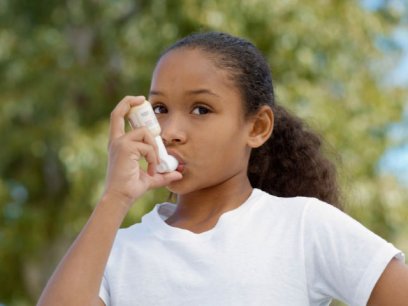
What is indoor air quality, and what causes poor indoor air quality?
Many are unaware of the potential negative health impacts of poor Indoor Air Quality (IAQ). According to the Environmental Protection Agency (EPA), IAQ refers to the air quality within and around buildings and structures, especially as it relates to the health and comfort of building occupants. Currently, indoor air pollution is ranked by the EPA as one of the top five environmental risks to public health.
Some common indoor air pollutants that threaten indoor air quality include: lead, dust mites, mold, radon, pests, carbon monoxide, pet dander, mold, and second hand smoke. To make matters worse, climate change, including increased humidity and precipitation, can exacerbate indoor air pollution by promoting mold growth indoors and increasing dust mites, bacteria, and other bio contaminants.
Indoor air pollutants can cause immediate effects, such as irritation of the eyes, nose, and throat, headaches, dizziness, fatigue, and aggravated or worsened asthma symptoms among asthmatics. Long-term effects are also possible, due to chronic exposure to indoor air pollutants. These effects may include respiratory diseases, heart disease, and cancer.
Who is at a higher risk?
Almost anyone can be at risk for indoor air pollution depending on their preexisting health conditions and the buildings they reside in, especially because people spend up to 90% of their time indoors.
In particular, children are at a higher risk for developing the negative health effects of indoor air pollution due to the amount of time they spend in school buildings. The schools present a heightened risk as they often suffer from poor IAQ due to old age and lack of funding to address indoor environmental issues, creating a nationwide challenge. Children specifically are more susceptible to this risk as their bodies are still developing, and it is physically more difficult for children to process toxins as adults do. In addition, children are more sensitive to exposures, and they also experience greater exposures: they breathe, eat, and drink more relative to their size than adults do, and they play closer to the ground, exhibit more hand-to-mouth activity, and are less able to identify and protect themselves from potential hazards.
Children with asthma are at an even higher risk for negative health effects, including asthma exacerbation and asthma attacks, due to poor IAQ associated with environmental triggers. However, adults can also be negatively affected by poor IAQ and may even develop adult-onset asthma. Asthma-prone adults and children are both at risk for asthma symptoms or flare-ups due to environmental exposure to allergens such as dust mites, pests, pet dander, mold, and second hand smoke. Asthma symptoms in adults are often more persistent than they are in children. Adult-onset asthma, triggered by poor IAQ at schools, can affect teachers, school administrators, and other adults working in school buildings.
Not only can poor IAQ lead to the health problems above, but it can also lead to lower academic performance in school and higher absenteeism due to exacerbated asthma symptoms.
What’s being done to address poor IAQ at school?
The first step in addressing an issue like poor IAQ at school is to raise awareness. National Healthy Schools Day, started in 2002, celebrates and promotes healthy and green indoor school environments for all children and staff. The Healthy Schools Network, which coordinates National Healthy Schools Day, partners with many agencies and organizations to spread the word on how schools can improve their indoor environments with guidance from the EPA’s IAQ Tools for School.
During National Healthy Schools Day, schools, communities, non-governmental organizations, and other groups can plan activities to highlight and address IAQ issues. These activities may include strengthening or creating an IAQ program at school, replacing cleaning products with safer substitutes, or hosting an IAQ or Green Cleaning Workshop, among other endeavors.
What else can schools do to promote the health of their students and the community?
In addition to partnering with the Healthy Schools Network and participating in National Healthy Schools Day, schools can get involved in the Air Quality Flag Program. The Air Quality Flag Program uses brightly colored flags based on the US EPA’s Air Quality Index, in order to notify communities about outdoor air quality conditions. Although the Air Quality Flag Program refers to outdoor air quality, the air outside can affect the air indoors and the community’s health. Based on the air quality outdoors, teachers and community members can tell which days, or what time of day, is the best to take a break from the indoors and engage in outdoor activity. In addition, on days when outdoor air quality is unhealthy, teachers and community members can aim to keep students and children indoors, noting that some asthma and allergy triggers may be heightened indoors as well.
For more information on how to promote healthy indoor environments, check out the following resources:
- Guides, Posters, and Reports on adopting healthy IAQ practices from the Healthy Schools Website
- Indoor Air Quality Facts from the EPA
- {Webinar} Learn about Climate, Air Quality, and Children's Health
Webinar Recording:
Sources:
- AAFA. “Adult Onset Asthma.” Asthma and Allergy Foundation of America. Accessed February 21. http://asthmaandallergies.org/asthma-allergies/adult-onset-asthma/
- EPA. 2018. “Introduction to Indoor Air Quality.” Accessed February 15. https://www.epa.gov/indoor-air-quality-iaq/introduction-indoor-air-quality
- Healthy Schools Network, Inc. 2016. “Environmental Health at School: New Solutions Put Children First.” National Conference. http://www.healthyschools.org/documents/EHatSchool_June2016-final_report.pdf
- Healthy Schools Network, Inc. 2011. “Guide to Green Cleaning: Practices and Products for Schools.” Healthy Schools Network. http://www.healthyschools.org/downloads/Guide_to_Green_Cleaning_2011.pdf
- Healthy Schools Network. 2018. “National Healthy Schools Day.” Accessed February 14. http://www.nationalhealthyschoolsday.org/
- Healthy Schools Network, Inc. 2012. “Protecting Vulnerable Students in ‘Sick’ Schools.” Healthy Schools Network, Inc. http://www.healthyschools.org/downloads/Protecting_Vulnerable_Students_in_Sick_Schools_Aug_2012.pdf
- Holland, K. 2014. “The Differences Between Childhood and Adult-Onset Asthma.” Healthline. Accessed February 21. https://www.healthline.com/health/asthma/differences-childhood-adult-onset-asthma


